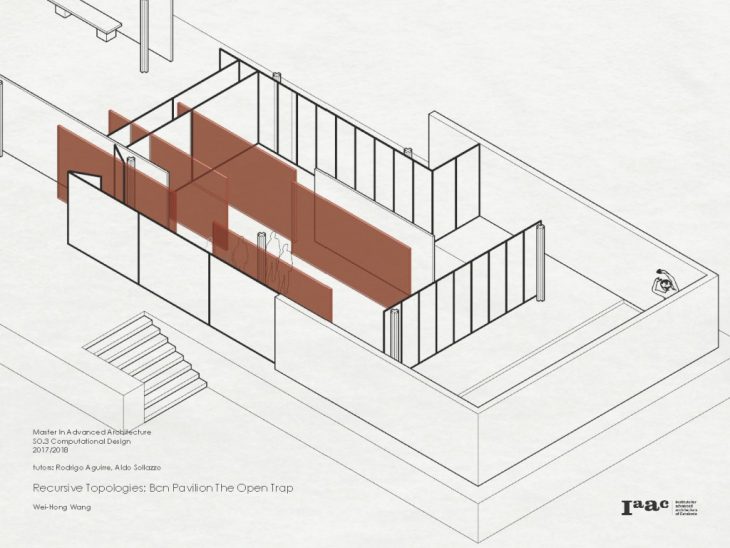
The Barcelona Pavilion was initially located on one of the routes in the 1929 International Exposition. The openness of this pavilion performs the movement of the visitors as the exhibition of itself. Though the placement the solid wall, it determined how the visitors go across the pavilion. This project is, therefore, exploring the loop between visitors movement and the duplicating a significant role, the solid wall in the centre of the main room, and developed as a trap with openness.
To manipulate the movement through the duplicating walls, it’s continually calculating the random spots in the main room to be the tail of moving visitor and the space left by the walls. The breaking dowing process would be like following: - calculate the space left by the occupation of solid walls - generate a random position as the first spot of the visitor’s movement - duplicate the wall where left in the room - generate a closed position as the second spot of the visitor’s movement - duplicate the wall where left in the room - repeat In this case, the elements in the loop would be: - space (as randomly populating spot) - walls (the sum of the duplicated walls) - visitor trail (the place visitor passed by)
